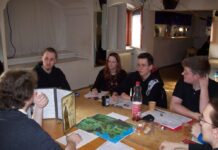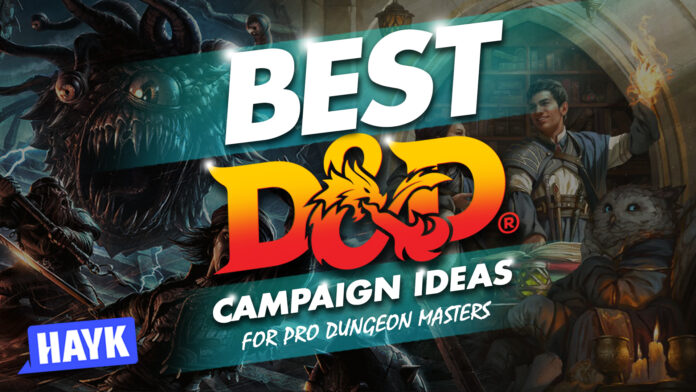
It’s normal for a DM to run out of D&D adventures or campaign ideas every now and then. This problem is a common part of DM burnout, and it can be solved by taking a short break or brainstorming ideas creatively to make even the most common tavern start scene fun and interesting.
If you’ve run out of campaign ideas, lair inspirations, tavern themes, or adventures, you can learn a lot from this article. We’ve covered some of the best D&D campaign ideas along with other products that can help you plan and run amazing sessions.
| Product | Preview | Price |
|---|---|---|
| D&D 300-page Campaign Builder | 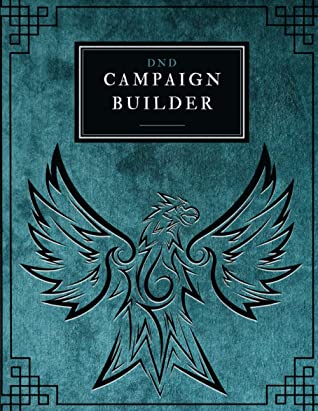 | |
| Dungeon Maps for Game Master by Silent Wave Press | 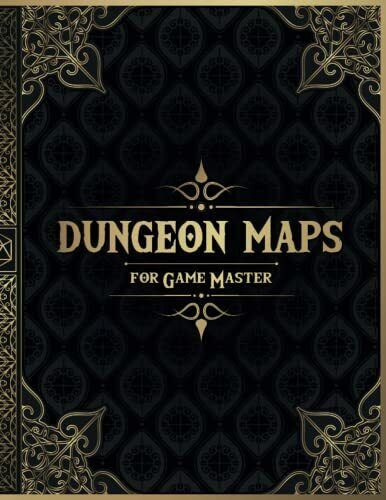 | |
| D&D 5E Deck of Cards Treasure Trove | 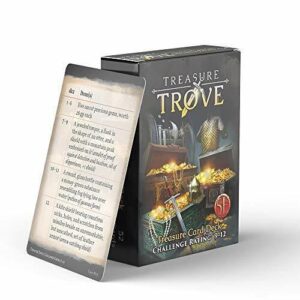 |
Why You Should Trust Us
HaykSaakian.com is your best source of in-depth D&D and tabletop guides. Every bit of information presented in our articles were tested, simulated, and documented. More importantly, we have reviewed all products thoroughly to offer the most authentic insights to all of our readers.
Contents of this Page
Top 3 Products for Making D&D Campaign Ideas
D&D 300-page Campaign Builder
Best for outlining a campaign

The D&D Campaign Builder by Shawn Griggs is a high-quality book that contains 300 pages divided among character sheets, diary pages, grids, and relative D&D information texts. Beginner DMs can benefit from the book by following the prompts and filling out the detailed character sheets. You can also use your own or borrow from popular character ideas online.
Weighing around 1.70 pounds, the D&D Campaign Builder paperback version can be transported easily through a bag or a carry case. The book also has a decent size and can stack properly with other books on a small table.
Despite the D&D Campaign Builder’s advantages, it won’t help you too much if you’re already an experienced DM. You probably have digital tools and the foreknowledge necessary for building a campaign. Another issue with the book is its fragile binding. Don’t turn the pages quickly or you might actually tear them down!
Dungeon Maps for Game Master by Silent Wave Press
Best for creating location maps and dungeons

To prepare for a campaign session or even mapmaking is one of the hardest parts of campaign creation, one shot campaigns included – especially if you’re not an artist. To save time and a bit of your sanity, you can just get the Dungeon Maps for Game Master Book by Silent Wave Press. This book contains different lair areas with a village, detailed rooms, and accurate symbols. Plus, the book is 100% budget-friendly.
The Dungeon Maps Book has 106 pages of accurate dungeon maps and grid pages. There’s also a customizable ‘Table of Contents’ section that will allow you to put page numbers and descriptive texts. In this way, you can breeze through the lair maps easily without going back and forth.
The most noticeable flaw of the book is its close resemblance to online map generators. In a map generator, you can adjust each setting and generate dungeons and maps right away. It’s possible to print 50 or more maps, but you will definitely spend at least two hours. In a way, the Dungeon Maps Book is all about convenience.
D&D 5E Deck of Cards Treasure Trove
Best for curating and accessing useful treasures
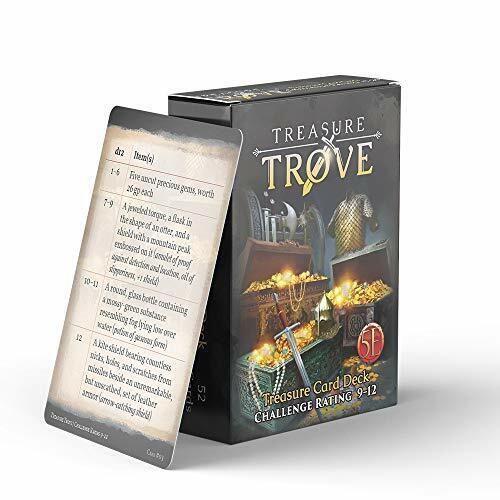
The Deck of Cards Treasure Trove from Nord Games is a convenient tool for players, party members, and DMs alike. Containing 52 cards filled with various game items, the Treasure Trove deck will speed up the process of generating loots and lair or dungeon rewards.
The Treasure Trove deck is compatible with any D&D 5E campaign. Additionally, the items within the deck are best for encounters within the CR (challenge rating) of 1-4.
You might be disappointed if you’re looking for cards with highly detailed artwork. All of the cards in this treasure deck have plain texts, numbers, and lines. Another issue of the treasure deck is information overload. Beginners might experience ‘analysis paralysis’ with the loot tables presented in the deck.
Buying Guide for Players Interested in D&D Campaign Books
You’re probably aware of the hundreds of D&D campaign books that you can find online or popular campaigns that follow the Elden Ring theme or even King theme campaigns. More often than not, it can be overwhelming to pick a book that will support your campaign let alone point out crucial tips on how to write a DnD campaign. In this article section, you’d learn about some simple yet useful strategies to help you shop around for excellent D&D books.
Focus on the Lair’s Content Value
A common challenge of buying D&D books is the fact that you can’t check all bits of featured content in one sitting. You may need to comb through reviews, recommendations, and even comments on social media. Therefore, right from the start, you must prioritize content value based on given reviews.
Content value pertains to the juicy information that you can get from the book. Will the information help you establish the campaign world? Is the information available online? What are the strong and noticeable points of the book? These questions are important for figuring out a book’s content value, and they will also point you to the most meaningful reviews.
Don’t rely on product descriptions alone – they’re meant to sell the book to thousands of users around the world. You can try looking for three-star reviews because they tend to be the most authentic among the rest.
All About Immersion
A high-quality campaign book (third-party or official) is capable of helping the reader immerse in a thriving world of wonders– even in a town setting. Some people love to read campaign books because the experience is somehow related to hopping into a new and strange dimension. Others, DMs especially, prefer the new mechanics or ideas presented by a campaign book.
It’s tricky to figure out a book’s immersion level. WOTC’s Monsters of the Multiverse, for example, is immersive enough for beginners. Every monster has a piece of accompanying lore and a detailed stat block. The book is all about monsters but it is enough to trigger your creativity so that you can build a campaign as soon as possible.
To somehow determine a book’s immersion level, you can look for a detailed review. Focus on a review with a detailed chapter-by-chapter comparison. Detailed reviews can usually be found on RPG forums and tabletop curation sites.
Check for Tables and Generators
Even if you are a creative DM, you will definitely save time by looking for a setting involving tables and generators. One example is an encounter table. Using an encounter table as a guide, you can just roll a dice and set an encounter within seconds. Loot tables are also useful because they generate treasures that players can find.
Whether you believe it or not, a campaign book with tables and event generators is worth your time. In the long run, the tables will make your job easier and prevent burnout.
Check for Free Maps
The best campaign books have free maps. Such map setting will help you meet and fit the pieces of your campaign story together. With free maps, you don’t have to download anything online or draw a piece from scratch. Perhaps you just need to add a few lines of description in the free maps.
It’s even more delightful if a book contains hyper-detailed maps without inconsistencies. Plain grid maps are okay, but extra details will help you describe the scenes better.
Mind the Stat Blocks in Games
Many DMs and dedicated worldbuilders care about monsters’ stat blocks. Basically, a stat block contains detailed information about a monster. The typical bits of info that you can find from a stat block are monster attacks, immunities, resistances, ability scores, saves, armor class, challenge rating, spells, suggested treasure, and XP reward.
Here’s a rule of thumb: every campaign book or supplement setting must contain at least five stat blocks. Such a rate is enough to validate a campaign book’s content value.
Durability Test
D&D hardcovers are durable because they are meant for players who are always on the go. A dedicated DM or player, for example, will probably attend one or two physical games per week. Conventions are also normal because tabletop companies love to sponsor big gaming events. If you’re a busy DM or player, always pick a D&D book with a durable cover.
A D&D book with a strong spine (the book’s middle binding) is a solid winner. Just imagine how many times you have to flip the pages over. If you do that with a cheaper paperback, the pages will wear down easier.
D&D Campaign Ideas
Once you’ve mastered the art of organizing a DnD campaign, it’s time to polish them with new ideas!
Magicpunk – A Combination of Steampunk and Arcane
Magicpunk offers the best things about steampunk and classic magical fantasy. In this type of campaign, players can build wonderful machines and cast spells at the same time. Artificers will feel more at home with this campaign, as well as spellcasters.
Designing a magicpunk campaign is easy because there are tons of D&D materials that you can find nowadays. The best sources are forums, social media (Tumblr and Reddit), and even well-curated blogs or websites. It’s also easy to make a magicpunk super-antagonist due to the availability of monster stat blocks online.
These are some great examples of magicpunk antagonists:
- A mad alchemist who wants to change the world to his image
- A cult leader determined to wake up some sort of a powerful “Gear Dragon”
- A tyrannical beast resulting from a failed experiment
- A rich and powerful warlord with an army of magic-powered gear soldiers
- A wizard-tyrant who hates technology, especially steam and gears
- A deranged artificer who wants to turn the world into a machine paradise
The best thing about a magicpunk campaign is the creative possibilities that players can achieve. Perhaps your players can build an airship powered by magic or a super gear-robot using arcane crystals for fuel!
Post-Apocalyptic Fantasy – Magic and The World’s End
A post-apocalyptic fantasy campaign combines the deepness of magic and the desperation of an ancient shattered world. This type of campaign is conflict-driven, pushing players to make drastic decisions in order to survive. There might even be some additional local factions that will make the players’ lives miserable. You will be in control to make the campaign feel alive.
In a post-apocalyptic fantasy campaign, the big central plot hook is very important. What is the major event that broke the world? Why can’t magic fix the world’s problem? What happened to the world’s civilized kingdoms? Are there any survivors of the cataclysmic event? These are some of the questions that you must answer while building a post-apocalyptic fantasy campaign.
When it comes to player stakes, the situations will vary. Some people or players might focus on saving the world, while others are probably concerned about power-mongering. As much as possible, you should make your post-apocalyptic campaign flexible to accommodate the players’ goals. But then again, don’t hold back on dishing out the consequences of the players’ actions!
The Great Monster War – Trench Warfare and Monsters
Trench warfare is a grimdark theme filled with gore, deaths, and long hours of hunkering down. It may be difficult to run potentially fun and potentially interesting campaigns based on the negative aspects of the Great War (also known as WW1) because of players’ mixed reactions. But what if you combine trench warfare and fantasy monsters? Now, you’ve got a story to tell!
In a trench warfare campaign, the players will likely start as soldiers taking orders from their superiors. Some people or players might feel conflicted with the orders, while others will just carry on since they’re concerned with loot and rewards. The conflict of interests is a great way to drive the story forward. You can even add some quests involving people victimized by the belligerents of war.
When it comes to monster inclusivity, there are no actual limitations. It all depends on the way the monsters fit your campaign narrative. If you want to include Fey elementals, you may do so. Just remember that your players may or may not feel disappointed about the decision.
To increase the gritty realism of your trench warfare campaign, you can add some trench navigation rules. Players should gain Exhaustion points while doing the most difficult missions, and spells should be rare. It’s even better if you can add a terrifying roaming monster that hungers for flesh.
Classic Planar Campaign – Spelljamming and Sorcery
A planar campaign is D&D set in space or in another dimension. Most planar campaigns are typically reserved for higher levels due to the difficulty of encounters. Planar travellers are also bound to face various consequences like madness, time dilation, and being hunted by extradimensional predators.
One of the best hooks of a planar campaign is the chance to navigate the cosmos with fantasy space ships called smalljammers (or whatever the DM wants to call it). Aspiring DMs will probably need stat blocks for alien monsters and in-depth space combat rules. Players, on the other hand, must take teamwork seriously if they wish to survive the cruelty of space.
Here are some of the components of a classic planar campaign:
- Lots of spacefaring ships with different agendas
- Planes to explore or colonize
- Strange races and creatures to be bargained with (or destroyed)
- Powerful artifacts and items to collect
- Ship construction and navigation roles
- Uncontrollable cosmic events
- For DMs: unlimited creativity due to the vastness of space
Psychological Horror – Not For the Faint of Heart
A psychological horror campaign is similar to D&D 5E’s Curse of Strahd or the classic Castle Ravenloft from D&D 3.5. The main factor that separates a jump-scare adventure from a psychological horror campaign is the lingering sense of doom. Every hallway must feel like a trap where the enemy is just lurking near. Also, social encounters must evoke tension and the certainty of death.
Some experts think that D&D 5E’s system is too lenient to create mechanical tension. In a way, the experts are right because D&D 5E has powerful utility spells and class features that can save characters from fatal situations. Still, the narrative is a primary component of D&D 5E. DMs can use the power of the narrative to build tension and create terrifying situations. Even mechanical or technical rules are secondary.
If you want to run a psychological horror campaign, you must practice sequential narration. Start by narrating the environmental and visceral aspects of a town or an area. Pick the best words but don’t flood the players’ minds with over-exposition. In most cases, onomatopoeia is your friend. Decorative props can also make a physical session horrifying (in a good way).
Full Mecha – Real Steel Battles
Mecha campaigns involve a lot of robot combat, customization, trade, and tactical planning. As a DM, you can run a mecha campaign by using the free 5E SRD (Standard Resource Document) and re-flavoring most aspects. Alternately, you can get an excellent tabletop book called Esper Genesis while combining mecha aspects from various community sources.
In a mecha campaign, you must set aside long hours for customization. Almost every player would want to own a mecha or a big robot filled with weaponry and metallic plating. The campaign story will still be the focal point of the game, but ‘robot-building’ is a strong motivational factor.
Spellcasting is a tricky thing to balance in a mecha campaign. If you’re meticulous about campaign balance, you can put specific limitations on spells. The limitations might disappoint spellcasters but they are necessary for the campaign’s long-term integrity. Otherwise, you can just go all-out and run a mecha campaign with spellcasters commandeering robots!
FAQ
How difficult it is to make a campaign?
Answer: It depends on your experience on DMing, writing, or trademark of the game design. However, a campaign usually has a few major components to keep it going. First, your campaign should have an overarching conflict or in-game problem. Second, you must tie the problem to an antagonist or a group of antagonists. Third, you need to lay down possible conflict solutions through story devices like quests, prophecies, and social encounters.
What are some quick campaign ideas for beginners?
Answer: Sailing the high seas or classic fantasy-and-pirates is a beginner-friendly campaign idea. You just need some templates for strange sea monsters and D&D naval combat. Another easy idea is to run is sword-and-sorcery. This type of campaign has the usual formula: a band of heroes must stop an antagonist from ruling or destroying the world.
What are some quick tips for making D&D campaign ideas?
Answer: The most important tip for any DM is to start small. Do not lay down huge chunks of information that might overwhelm your players. Let the suspense build up, and always observe if your players need a break. Also, don’t hesitate to steal campaign ideas and add your own tips! Ideas are free in D&D, and you can always modify them as often as you want to.
Do I need miniatures to make my campaign idea exciting?
Answer: While miniatures make adventures fun and interesting, they aren’t the strong driving factors of a campaign. Don’t get caught up with expensive miniatures or table pieces. You just need a strong imagination and the dedication to run the campaign from start to finish.
Where can I find D&D campaign ideas online?
Answer: Reddit and Tumblr are excellent treasure troves of fun campaign ideas and adventures. On Reddit, you can read about the collective inputs of DMs and players alike. Tumblr, on the other hand, contains remarkable art pieces like battle maps, sketches, and free NPC designs. You might even stumble upon personalized event encounter generators and loot tables. D&D Beyond forums are also filled with great ideas and even stories that you can copy.
Do I need an established world for my campaign idea?
Answer: An established world is the logical groundwork of your campaign idea. You don’t need twenty pages of a fleshed-out campaign world. Rather, you can start with a small city and add other details as the players go from one session to another. If you’re really busy, you can choose Faerun as the template for your world. Just change any detail as you see fit.
Conclusion
Implementing homebrew or ranked D&D campaign idea is not too difficult. However, the challenging part is ensuring that the idea still blends nicely with your fun campaign story. Plus, you still have to do the hard work of running one session after another. But as long as you got the fundamentals nailed down, you can run any type of campaign without major problems or issues.
Always remember that these 3 products can help you build a campaign:
- D&D Campaign Builder – Best for outlining a campaign
- Dungeon Maps for Game Master – Best for creating location maps and dungeons
- D&D 5E Treasure Trove – Best for curating and accessing useful treasures
Do you have a unique campaign idea? Let us know in the comments section below!


